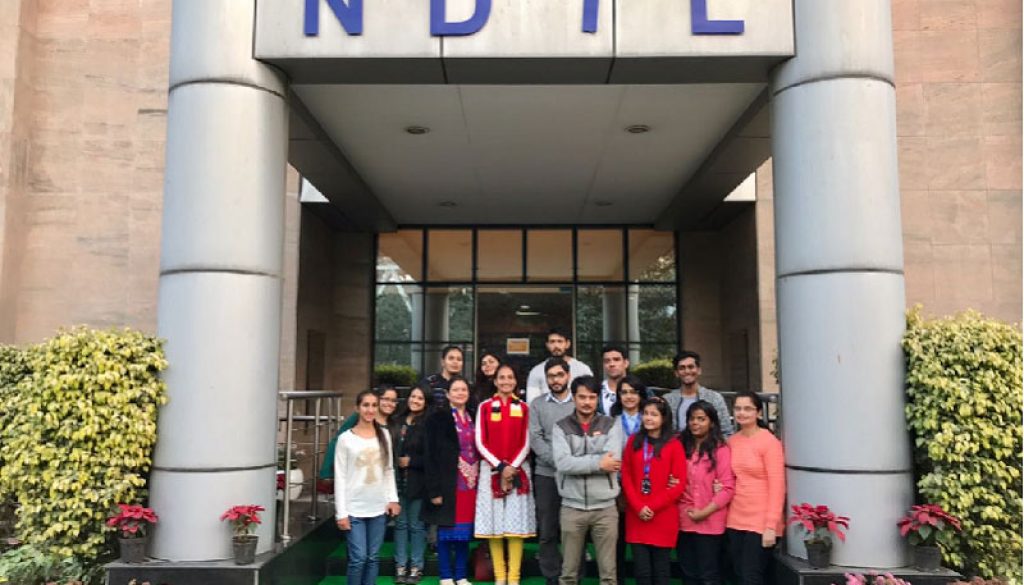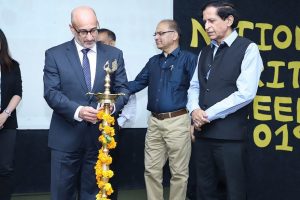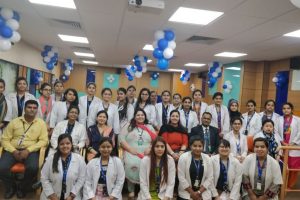Report on Visit to National Dope Testing Laboratory
Educational visit has its own importance in a career of a student who is pursuing a professional degree. It is considered as a part of college curriculum. The main objective of industrial visit is to provide students an insight of the practical applications of what they are learning in theory because; theoretical knowledge is not enough for making a good professional career. With an aim to go beyond academics, industrial visit provides student a practical perspective on the world of work. It provides students with an opportunity to learn practically through interaction and working methods. Industrial visits provide an excellent opportunity to interact with industries and know more about industrial environment. Educational visits are conducted with an objective of providing students functional opportunity in different sectors.
Keeping in view the same, Department of Nutrition & Dietetics, Faculty of Applied Science Manav Rachna International University, provided a golden opportunity to its students of M.Sc. II and IV Semester to visit National Dope Testing Laboratory, Ministry of Youth Affairs & Sports, Government of India (New Delhi) on 5th January 2017. The main objective of visit was to provide a scientific platform to exchange the information on the recent advances in dope testing in sports in India. Mrs. Sheela Jain, Director, NDTL, welcomed the faculties and students and felicitated the visit.
NDTL has the state of the arts lab facilities for research & is engaged in conducting analysis of national and international players. The laboratory is accredited with the World Anti Doping Agency (WADA) and National Accreditation Board for Testing and Calibration Laboratories (NABL). It is actively involved in various research projects on doping analysis in field of human and horse dope testing. In case of horses, doping is done on race day to enhance their performance or to mask injuries and to get unsound horses on the track. NDTL also receives samples from Royal Calcutta Turf Club, Kolkata, Bangalore Turf Club, Bangalore, & Royal Western India Turf Club, Mumbai. It has been successfully participating and qualifying in the proficiency testing rounds, since 2012 conducted by the Association of Official Racing Chemists (AORC). NDTL is also collaborating with other race clubs.
The students were explained about the protocol of receiving the sample of players for analyses from National Anti Doping Agency (NADA) which is further coded twice in order to conceal the identity of the players. The sample is then processed for analysis of dope testing. Nationally, urine and blood samples are received from National Anti-Doping Agency (NADA), Games Organizing Committees and samples collected through International Doping Tests and Management (IDTM) for various agencies viz BCCI. Apart from this, NDTL is testing samples from various international agencies (approx 15 neighboring countries) for both competition and out-of competition testing.
Research Scholars from NDTL shared their knowledge with the students and explained about the various techniques and processes used in doping analysis. Students were taken to specialized sections where tests are performed and got a chance to understand the functioning of all the latest and updated instruments used to perform the analysis. The use of Gas Chromatography coupled with Mass Spectrometry (GC-MS) is the most common and the oldest technology being used worldwide for dope testing. During the past 8-10 years, the use of liquid chromatography coupled to tandem mass spectrometry (LC-MS/MS) has become quite widespread. This technique has helped to detect the difficult drugs falling into various categories of banned substances and is becoming increasingly more important in the fight against doping. Apart from GC-MS and LC-MS/MS the use of Gas Chromatography coupled with tandem Mass Spectrometry (GC-MS/MS) and Isotope Ratio Mass Spectrometry (IRMS) is also very prevalent in sports drug testing. Both GC-MS/MS and LC-MS/MS are used primarily to analyze urine samples. The analysis of the blood matrix requires a completely different type of equipment which is commonly used in hospital laboratories.
It was very interesting and informative for the students to know that the samples of players for dope testing were differentially analyzed for Pharmacological agents, Hormonal agents, Oxygen supplementation and even blood transfusion.
The students showed their interests and actively participated in the visit. Dr. Pratibha Singh (HOD) and Dr. Barkha Bhatnagar (Associate Professor) Department of Nutrition and Dietetics, Faculty of Applied Science, MRIU took the initiative in organizing the educational visit and also accompanied the students along with. It was an interactive forum for exchange of new knowledge and opportunities for stimulating young minds.







